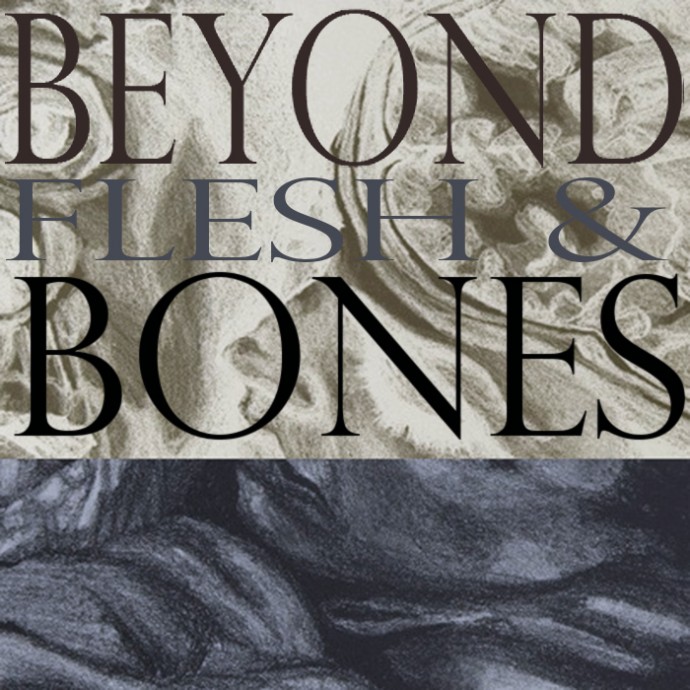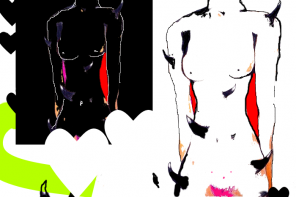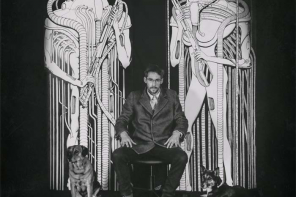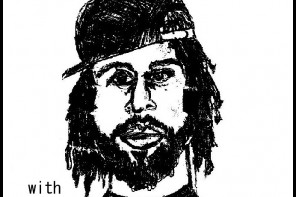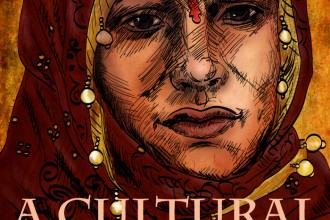A human being is more than the sum of her body parts. Nevertheless, throughout our everyday lives we encounter situations where we are reduced to little more than an object, a number, or a piece of meat. Andrea Barr is an artist whose work focuses on graphic anatomical images of human flesh. She explains to Sensa Nostra how and why she explores the idea of deconstructing the human body, and how this theme resonates throughout the past and present of art, science, and the butcher’s shop.
What interests me about the body is its deconstruction; I’m interested in how people in different positions are looking at the body and taking it apart, in their minds, in their hands, in their eyes. I’m coming at it from the approach of the artist or the model, the doctor or the patient, and the butcher or the piece of meat. More or less, I’ve had experience in all of these positions and what interests me are the similarities and differences in the way different people approach the body as an object.
As an artist interested in anatomy, I’ve been looking at medical illustration as a career. This has had a huge influence on my artwork from a stylistic perspective. I used to go into the cadaver lab to observe dissections and do drawings. As far as most people go, I had a very abnormal reaction with regards to the labs. You’d expect to walk into a cadaver lab and see blood and guts everywhere, but honestly it’s all very surreal. All of the specimens look like wax, there’s no trace of blood, and if there is it doesn’t look like blood. The main colours that you see are an off-yellow, green and purple. For example, the first time I saw the whole body they turned this thing over, and half of the woman’s body was purple.
After someone passes they sit there for a certain amount of time; that affects the shape of the body, and the colours all change as the blood sinks to the bottom of the body. Between the time of death and after the preservation all these things happen that render the body not very human-like at all.
It was very interesting because when I walked into the lab for the first time, the medical students with me were also all experiencing this for the first time. But my experience of the lab was shaped by my prior knowledge and personal experiences and theirs was shaped by an entire year of medical school.
Watching the way the medical students approach the body in this situation—this body that doesn’t really look like a body anymore—had an interesting crossover for me into how artists approach the body. I was doing life drawing for about four years before I started doing nude modelling myself. My experience with drawing affected the way I modelled, more than the reverse, but they both go hand in hand. Even within the art world, there’s a misconception that artists are trying to leave the human ‘intact’, and I think that’s very much not the case. One of my most memorable experiences from a life drawing class was of one student who was really struggling to make the person look like a person. What the teacher said to them was, “That’s not a person up there; that’s a stack of chairs. Look at it like a stack of chairs.”
In the weeks leading up to drawing the nude model for the first time we had done still lifes, observational drawings—it was an exercise to see shadows and shapes and angles. The artists who are really good at representing the body have to deconstruct this body into lines and shapes. When I was modelling I would be thinking about the shapes I was creating, the way that my spine was bent, and how somebody would be drawing that. I would alter my position based on the way that I saw everyone else seeing me, which is an interesting two-sided thought process. It’s similar to what we go through in everyday life, walking by wondering how people are seeing us, but it is very, for lack of a better word, naked. They can see everything: all your tattoos, all your scars, all your body fat, every imperfection.
After visiting some anatomical models and specimens on public display at the Charité, the university hospital here in Berlin, I began to focus on the idea of the body on display and how this is connected with authorship and artistic license. There are some intriguing commonalities—as well as differences—in the display cases, pedestals, vitrines, frames, in which the bodies are displayed. Many display the body, its parts, or representations of it in a very cold and detached manner, while some methods prefer to display the body as a piece of art: something with a particular aesthetic quality that ranges from sublime to shocking. Either way, this brings into question the authorship, or even ownership, of the body as material to fashion how we like.
Particularly interesting to me are the historical and modern tradition of ‘signing one’s work’ (i.e. including the name of the artist or preparator somewhere on or next to the specimen or representation). It brings up an issue of power dynamics that are ever-present in the worlds of art and medicine when the observer and the observed are involved. As an artist and someone who is interested in learning various representation and preparation techniques, it is very important to me to reflect on this and ask myself, where does one draw the line?
I’m also interested in the history of anatomical illustration, and there’s an interesting parallel with the history of medicine itself. Artists like Da Vinci would make deals with gatekeepers at tombs to get in to see the dead bodies so they could draw them. Vesalius, another early anatomist, would steal bodies or parts of bodies hanging from the gallows. There’s an interesting parallel history in the way surgical students would procure bodies that was similarly very much illegal but is the basis of the knowledge that artists and medical professionals have today. The history really comes out in the very editorialised, stylised illustrations. For example, Vesalius has this famous series of bodies holding their own flesh. He’s just trying to show the role of muscles, but he has these muscular bodies in contrapposto positions holding their flesh back like they’re made of cloth with whole landscapes behind them. They look creepy and horrific to us now, but this was the approach artists took and this was the teaching tool they had at that time.
Modern medical illustrators choose to represent the body in a very cut and dried, objective, ‘ethical’ way; it’s more about what’s going into textbooks. This reflects medical history and the shift in the philosophy behind medicine. This shift is explored in French philosopher Michel Foucault’s book The Birth of the Clinic. The term Foucault uses is ‘the medical gaze’, which he uses to explain how the doctor looks at the patient and how this has changed as medicine has advanced. You no longer have doctors going around visiting individual patients; you have the teaching hospital and the clinic. You have all of these patients with similar symptoms grouped together. They are trying to find similar diagnoses to treat similar diseases and to help multiple people, but it has also changed the way that the doctor relates to the patient. The original question asked was, “What is the matter with you?”, and now the question is “Where does it hurt?”. Medicine has become less about an individual and more about exclusively the knowledge and the doctor.
I’ve also had this experience in the clinic myself, of being the ‘object’ that the doctor is looking at, and I have had a real sense of this knowledge gap. When you go in to the doctor you will do anything and tell them anything just because the person in front of you is wearing a white coat. I’m not a primitivist in any sense; I’m not saying we should go back to the old ways. Obviously a lot of hugely important advancements have been made in medicine, but it’s also scary in some ways, the way that we’ve been trained to relate to doctors as the all-knowing. A feeling of control has been lost.
When a doctor opens a body it has all these mechanisms that can be figured out; you can count the similarities and teach your students, “This part does this, this part does that, and that’s why our arm looks like an arm.” A lot of the body is very much like a machine. But it’s not that simple. What I found amazing were the tiny subtle differences that are present in every body that you open up. In one body this tendon is doing one thing, and in another it’s actually doing something slightly different. So this aspect of being a machine is true, but only to a certain extent. People have created this dangerous separation between the body and the mind and made them out to be two completely separate things. People have a lot of trouble seeing their body and mind as parts of one whole thing that affect each other. For me it’s interesting to think of the body as a vessel that carries the person, whether that’s a soul or whatever.
This is what my art is about: different ways of approaching a body, opening a body, deconstructing a body, reconstructing a body. The way that anatomists and artists and butchers approach this is in many ways not so different. There’s something really disturbing about that, but there’s also something really fascinating about that. The image of hanging meat is just another way to show this in a very vivid sense. The butcher is all about cutting the body into parts. When you see meat in the shop window its all about the parts; it’s not about the whole. With the doctor it is supposed to be more about the whole person, but in a sense it is still all about knowing what’s inside, knowing where to cut, knowing where to take things apart and put things back. The approach is not identical—there are obviously some really key differences—but if you take a step back and look at the histories of each of these disciplines and the different approaches these different people take, they’re really quite eerily similar.

